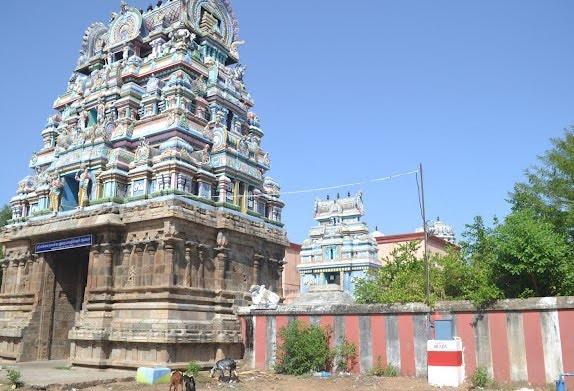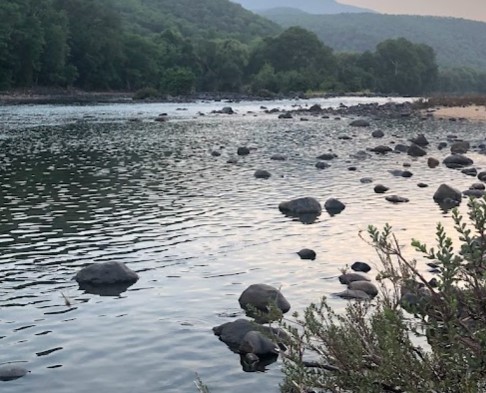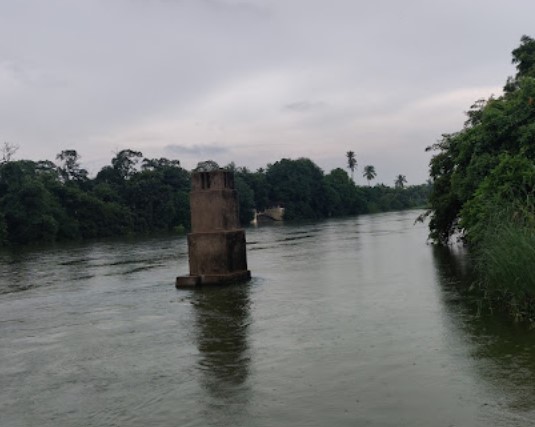Pasupatheeswarar Temple, located in Kallar Pasupathi Koil, Papanasam Taluk, Thanjavur District, Tamil Nadu, is a revered Hindu temple dedicated to Lord Shiva. The presiding deity is known as Pasupatheeswarar, while the goddess is called Paal Vala Nayaki or Loga Nayagi. This temple is believed to be over 1,500 years old and is situated on the banks of the Kudamurutti River, a distributary of the Cauvery River.
The temple is one of the 70 Maadakovil built during the 2nd century by the Chola King Kochengat Chola. Maadakovil temples feature elevated structures designed to prevent elephants from reaching the sanctum, a unique architectural style of the Chola empire.
Additionally, Pasupatheeswarar Temple is one of the seven shrines associated with the Saptha Matrikas (Madhas/Mangais) in the Ayyampettai/Pasupathi Koil area along the Thanjavur–Papanasam (Kumbakonam) route. This temple is also linked to Mother Varahi, further enhancing its spiritual significance.
PURANIC SIGNIFICANCE:
Pasupathi name origin:
- When Lord Shiva plays his Udukkai drum, He grants Beeja Veda Shakti blessings through the Beejakshara sound waves that he generates through the drum.
- Siva’s hand drum (Udukku or damaru) has two faces, one the Pasu side and the other the Pathi side.
- Pasu refers to the jivatma, the bound, individual soul.
- Pati refers to God as the lord of the bound souls who redeems them from their bonds (pasam).
- This Pasupathi Temple in Pasumangai is one of those sacred spots where the bound (Pasu) souls can reach the (Pati) Divine.
- Pray to Lord Pasupathi here for that divine Bija Veda Gnana wisdom that can unite you (the Pasu) with Him (the Pathi).
Kamadenu worshipped Lord Shiva here:
It is believed that Divine cow Kamadenu worshipped Lord Shiva here.
RENOVATION:
- These temples were later renovated by Vijayanagara ruler Veera Sumbanna Udayar with sanctions of land for temple maintenance.
- He also built the five tier main tower – Rajagopuram 65 feet tall that contains a mention in Telugu of this work representing Naicker architecture.
- The then Thanjavur Maratta king Prataba Simhan, who was paying tax to the Arcot Nawab, delayed the payment once.
- Exasperated, the Nawab invaded Thanjavur twice.
- The second army of the Nawab Anwaruddin camped near the Pasupathikoil village and began attacking the temple with a tanker.
- In retaliation, king’s commander Manojiappa gave a fitting fight and defeated the Nawab and captured him.
- Thus the place and Pasupatheeswarar temple were subjected to successive calamities and was renovated by the King Pratapasimhan.
- One can find a mix of Cholas, Naicker and Maratta cultures in the temple now.
- After the days of kings were over, there was none to take care of the temple and its maintenance leading to its poor condition.
- Many beautiful sculptures had been robbed and there is no trace of them.
- The first corridor (prakara) was almost floored off.
- The Goddess and Her shrine were almost destroyed.
- Bats were flying.
- The temple is built in accordance with the Agama rules in the north eastern corner (called Eesanya corner) in the Kallar Pasupathikoil village.
- The 65 feet tall main tower (Rajagopuram) is very beautiful at the entrance.
- There are facilities to climb the tower.
- A Nandhi of the Chola period is on the western side under the Madakoil in a sitting form with its legs folded.
- Some sculptures are available here and there.
ADMINISTRATION:
The administration of Pasupatheeswarar Temple is typically managed under a Temple Trust Board or Temple Management Committee. This committee oversees the operations, finances, and overall administration of the temple. The exact structure may vary based on local governance and temple traditions.


